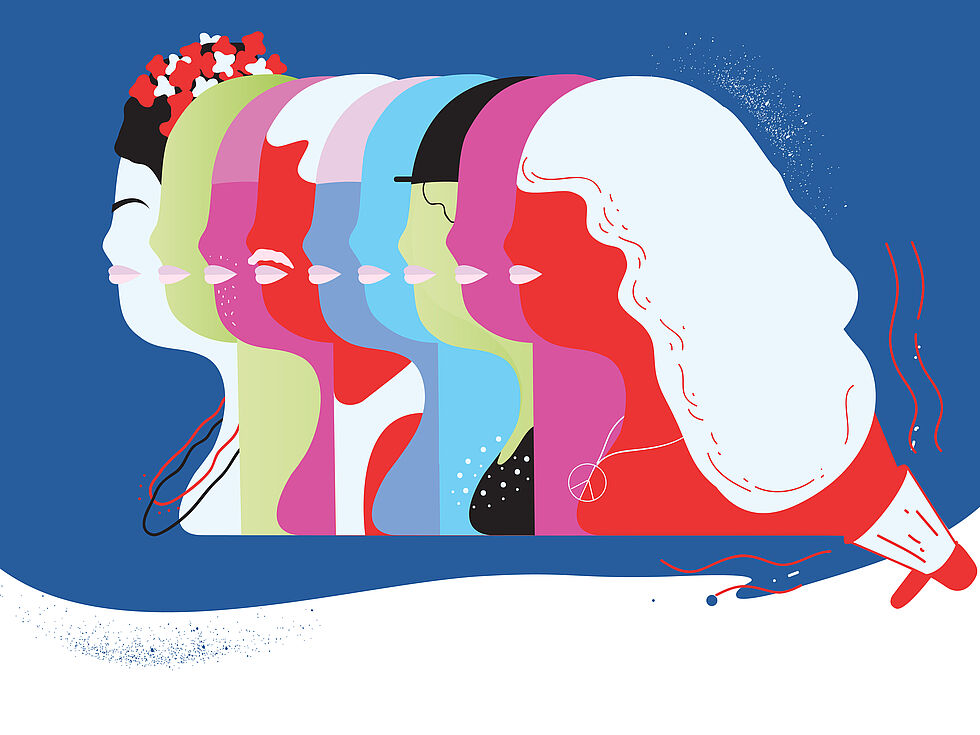CUT-Brazil, a trade union centre at the forefront of the feminist struggle
Read this article in Spanish or French.
In 2012, measures were taken to ensure that female trade unionists would achieve parity in the biggest trade union in Brazil and Latin America, the CUT (Central Única de Trabajadores), in a country where women’s representation in parliament, for example, is amongst the lowest in the world, and the lowest in South America.
The measures, implemented in 2015, were "the result of a long process of building power," according to social worker Didice Godinho Delgado, the first coordinator of the CUT’s National Committee of Working Women (CNMT) and author of the study Building Workers' Power with Gender Parity: the case of CUT-Brazil, published by the German foundation Friedrich-Ebert (FES).
CUT is the largest trade union centre in Latin America and the fifth largest in the world, bringing together 30.4 per cent of all unionised workers in Brazil, according to the study headed by Godinho. Gender parity has turned the CUT into a vanguard trade union within the women’s movement and an exception "not only within the trade union movement of Brazil, but the whole of Latin America and, perhaps, the world," Junéia Martins Batista, who heads the National Women’s Secretariat (SNMT, previously CNMT) of the CUT, tells Equal Times.
“We understand that working women are even more exploited than men, working the same if not more and earning less,” the CUT president, Vagner Freitas, said in a recent declaration. Many trade unionists like him supported the principle of parity from the beginning. But not all of them.
"There was some resistance from men, because the initial idea was that, in order to establish parity, a number of men would have to be excluded from the leadership," points out Janeslei Aparecida Albuquerque, the CUT secretary of relations with social movements.
"The solution found was to increase the number of secretariats to include a parity of women, without excluding any of the men. In other words, the numerical issue was resolved, but there is still a long way to go to ensure more women have political prominence and hold decision-making roles," she adds.
“That’s why we want a woman in the presidency of the CUT,” says Martins.
For Godinho, parity has been "decisive in building institutional power for women" and has strengthened the internal democracy within the trade union, as "there can be no democracy without women".
Can men not defend women’s interests? "They can and they must," says Martins. But it is not enough. "It is essential that women also hold power, that they go from having influence to having real power."
Having more women in positions of responsibility within the CUT has meant that “women’s issues have become the trade union centre’s responsibility”.
Parity has proved successful in placing issues such as childcare facilities, collective launderettes and the extension of paternal leave on the trade union agenda, as well as furthering the debate on work-life balance and shorter working hours. But as Godinho explains, it took thirty years to secure it: first of all, one or two women were symbolically included in each committee, which conferred a “symbolic role on these women, as if they were the representatives of women in general,” according to Godinho. Then, in 1991, the CUT adopted a minimum quota for women, which enabled “a qualitative change in the balance of power,” Godinho adds.
The building of networks was essential during this long struggle: all the bodies related to women built a network, the women’s collective, and held regular meetings to converge positions and share strategies. There is great diversity amongst the women in the CUT, a combination of different identities (social, ethnic, political), but they have proved capable of giving priority to their identity as women. They also succeeded in winning the support of male leaders, which was central to advancing their cause.
Cross-cutting issues
"Not all of the women trade unionists in the CUT are feminists, although their number is on the rise and they are fighting against all forms of discrimination, based on a feminism that links gender, class and race," maintains Godinho. Since its foundation in 1983, the CUT has been responding to the 'new trade unionism' model, engaging with social movements in working class neighbourhoods and with women’s movements, for example.
"There is a mainstreaming of rural and Afro-descendant women’s issues within the CUT," explains Martins. Rural women have always been prominent in the CUT: the current vice president, Carmen Foro, is a rural woman, which means the rural agenda reaches the central head office.
In addition, Martins recalls, "the debate concerning rural women links up with environmental issues: the need to care for the land that produces our food and to value the work of producing food, which family farmers provide us with, not the big companies."
With regards to black women workers, the CUT established a secretariat to combat racism in 2009. Its secretary, Maria Júlia Reis, explains: "When you are a woman and you are black in this country, the situation is all the more difficult."
Gender and racial inequalities "are structural pillars of the inequality in Brazil," explains Godinho, so they have to be addressed in tandem.
Indigenous women, for their part, have not yet been directly included in the leadership structures of the CUT, although "we ended up engaging with them through the Women’s March [earlier this year]", points out Albuquerque.
In addition to black and rural women, the CUT integrates the diversity inherent to the women’s movement: women from poorer neighbourhoods, urban and rural workers, academics, young women and LGBTI. This mainstreaming is combined with the women trade unionists’ capacity to build bridges with the academic world and to work in partnership with social organisations.
The CUT is developing training programmes in conjunction with public universities and has contributed to the theoretical debate held by the Feminist Think Tank on Productive and Reproductive Work, which feminist activist Vera Soares qualified as "one of the most interesting experiences arising from the interaction between the CUT, feminist activists and feminist academics". In this way, the CUT "has become a constituent of the women’s movement" rather than a simple ally, according to Maria Betânia Ávila of the NGO SOS Corpo Feminismo e Democracia (Feminist Institute for Democracy), from Recife.
Risk of going backwards
But much remains to be done. "Sexism is cultural and has to be tackled on a daily basis, in the everyday practices of the trade union movement. They are the most difficult barriers to break, because many women in the CUT continue to replicate the overload of domestic tasks, the double or triple shift. Sharing domestic and care tasks equally is still a challenge for us," says Martins.
In Brazil, according to official statistics, in 2014 women worked a total of 59 hours a week, combining social reproduction work (unpaid domestic and care work) with their work outside the home. They worked, on average, six hours more a day than men.
The challenges for the trade union are even greater in the current political climate.
The CUT regards the government of President Michel Temer with mistrust, considering it to be illegitimate and the consequence of a misogynistic campaign against the first woman to reach the presidency of the country, Dilma Rousseff.
"The coup we experienced here has all the hallmarks of machismo, misogyny and patriarchy," says Albuquerque.
"A conservative magazine, a mouthpiece of the right, published a report on the new First Lady under the heading: 'Beautiful, demure, stay-at-home wife', highlighting what this government perceives as the ideal woman. It is also with "embarrassment and shame" that Albuquerque recalls Temer’s speech on 8 March, in which he praised women’s financial awareness based on their housekeeping skills.
"The reforms this government is imposing are particularly damaging for women," adds Albuquerque. "The PEC 55, which limits public spending, will mean an end to many public policies linked to equality. The reform of the retirement law, which sets the state pension age at 65 for both men and women, ignores the fact that many women start working very early in life," says Martins, who is confident that these reversals can be overturned through social struggle.
This political climate could affect the dynamic within the CUT but, according to Godinho, the changes underway "have already reached a good level of consolidation". As Godinho, the report’s author concludes: “There is no turning back.”
This article has been translated from Spanish and was first published by Equal Times on 4 October 2017. The full report by Didice Godinho Delgado with the support of Friedrich Ebert Foundation can be found here.
Read the report also in Spanish.
FES Connect brings you stories of successful trade union action documented in a series of studies published under "Trade Unions in Transformation," project of the Global Trade Union Programme of FES. For more information, contact the programme coordinator Mirko Herberg.
About FES Connect
Connecting people, in the spirit of social democracy, we source and share content in English from the German and international network of the Friedrich-Ebert-Stiftung.

